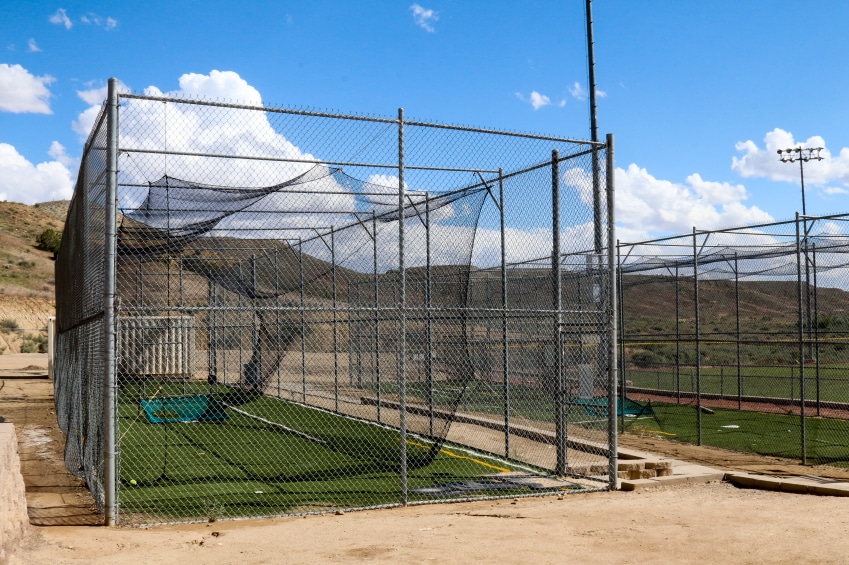Baseball has long been one of America’s most beloved pastimes. Nothing quite says summer like catching a game with your family in the summer sunset, soaking up the dying rays of the day, hot dog grease smeared on your chin, a baseball cap pulled low on your brow.
Nothing quite says summer like catching a game with your family in the summer sunset, soaking up the dying rays of the day, hot dog grease smeared on your chin, a baseball cap pulled low on your brow.
With these seminal American family summer experiences, it’s no wonder that children and adults also love playing baseball. A game of catch, practicing pitching and fielding, or even a pickup game of baseball are common occurrences in many suburban neighborhoods. And while not everyone may have the time and resources to build an entire baseball diamond on their property (Field of Dreams, anyone?), batting cages are becoming increasingly popular as a way to connect with America’s pastime and be physically active.
Whether you are installing batting cages in your home or operating a commercial batting cage business, one thing is certain: you should augment your batting cage experience by incorporating artificial turf for batting cages onto the ground!
Commercial batting cages
Batting cages are used to help baseball players or baseball enthusiasts practice proper form in swinging and batting. An automated machine pitches balls to the batters. Most machines can be adjusted for distance, speed, and to imitate various types of pitches so that batters can become more skilled at hitting. Because batting cages require a substantial investment in time and hardware, many parks and sports facilities offer batting cages that can be rented.
Despite some coaches’ reservations, batting cages are appealing to both serious baseball players and people looking to blow off some steam. Batting cages are ideal for high school athletes who need to practice their skills for a reasonable price and close to home. They are also often a family bonding experience, a way for baseball enthusiast parents to share the sport they love with their children.
Keeping batting cages maintained
Commercial batting cages are convenient and popular, but from the perspective of the proprietors, they get a lot of wear and tear from the constant, revolving hordes of people using them. So what solutions are there to make sure the batting cages are easily maintained, neat and attractive and authentic-looking?
One thing that all batting cage managers should consider is using artificial turf. Artificial turf is composed of synthetic fibers that are arranged to look like real grass. It is often made from rubber, nylon, or polypropylene, and has many commercial and athletic applications – including in batting cages!
Artificial turf is ideal for commercial batting cages because it withstands heavy foot traffic. Also, in indoor batting cages, where it would be difficult to get real grass to grow, artificial turf will give an authentic baseball-diamond look to your space. Since artificial turf does not need to be watered or mowed, weeded or reseeded, it will reduce long-term maintenance costs as well.
Furthermore, because of its hearty construction, artificial turf is shock absorbent and easy on an athlete’s joints, reducing the risk of injury.
Batting cages at home
There are, of course, advantages to having your own at-home batting cage, if you have the monetary and physical resources necessary for the construction and maintenance. You can always be sure that the facility is available to you (which, in a commercial setting, will obviously not always be guaranteed), and you can make sure that everything is properly operational and not worn out by others’ use.
Of course, along with those benefits come the attendant responsibilities. You will need to provide your own maintenance, and if something breaks, then you will bear the cost of fixing or replacing it. In addition, batting cages do require a fair bit of space in order for them to be safely operated, so a large piece of property is a must.
But, again, artificial turf can be hugely beneficial in creating and using your at-home batting cage or cages. Like in commercial use, the artificial turf will ensure longevity and ease of use. It will not wear out, even after repeated use, it is cost-effective because it will not require much maintenance. Unlike traditional grass, you won’t have to mow it as a part of your lawn, you won’t have to worry about it become weedy or muddy as the seasons or weather change and it will stand up to wear-and-tear, even if your family has young children (who are notoriously hard on everything!) using the batting cage.
Benefits of practicing on turf
Artificial turf is also a great way to practice for real games, whether in a commercial or at-home batting cage. It simulates real grass but also prepares the player for astroturf or artificial grass surfaces, which is great. It doesn’t need to be treated with pesticides, so it is environmentally friendly and health-conscious and no doubt this will appeal to a lot of people.
It is versatile and weather-resistant, meaning that players won’t have to wait for the grass to “dry out” after rain before continuing to practice or play. It is also more durable than traditional grass, less prone to drying out or being reduced to dirt or mud patches. It is said that turf pays for itself in about 2-3 years, due to the lack of maintenance required.
Artificial turf has so many benefits, and no drawbacks – it is the ideal surface to carpet your batting cage, whether at home or in a commercial setting.
Because of the overwhelming popularity of baseball in America, batting cages are a seminal sports experience. They are a great way to pass time with friends and family, and a potentially useful tool for serious baseball players at any level when used properly. While many people use commercial batting cages, there is also a significant market for at-home batting cages. But in either case, the inclusion of artificial turf truly augments the overall experience.
Artificial turf is useful, durable, cost-effective, and easy. It is a must for any batting cage environment.

